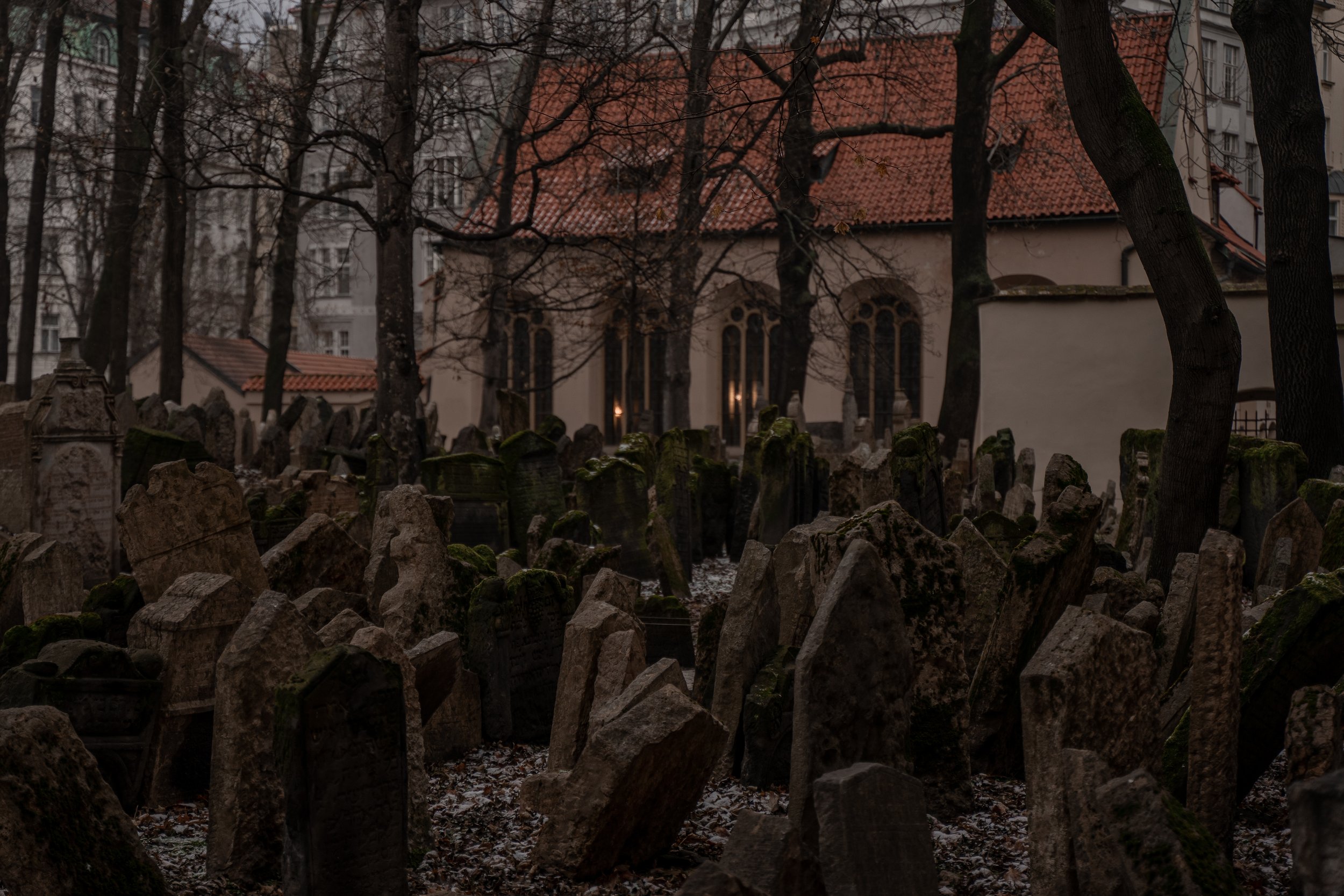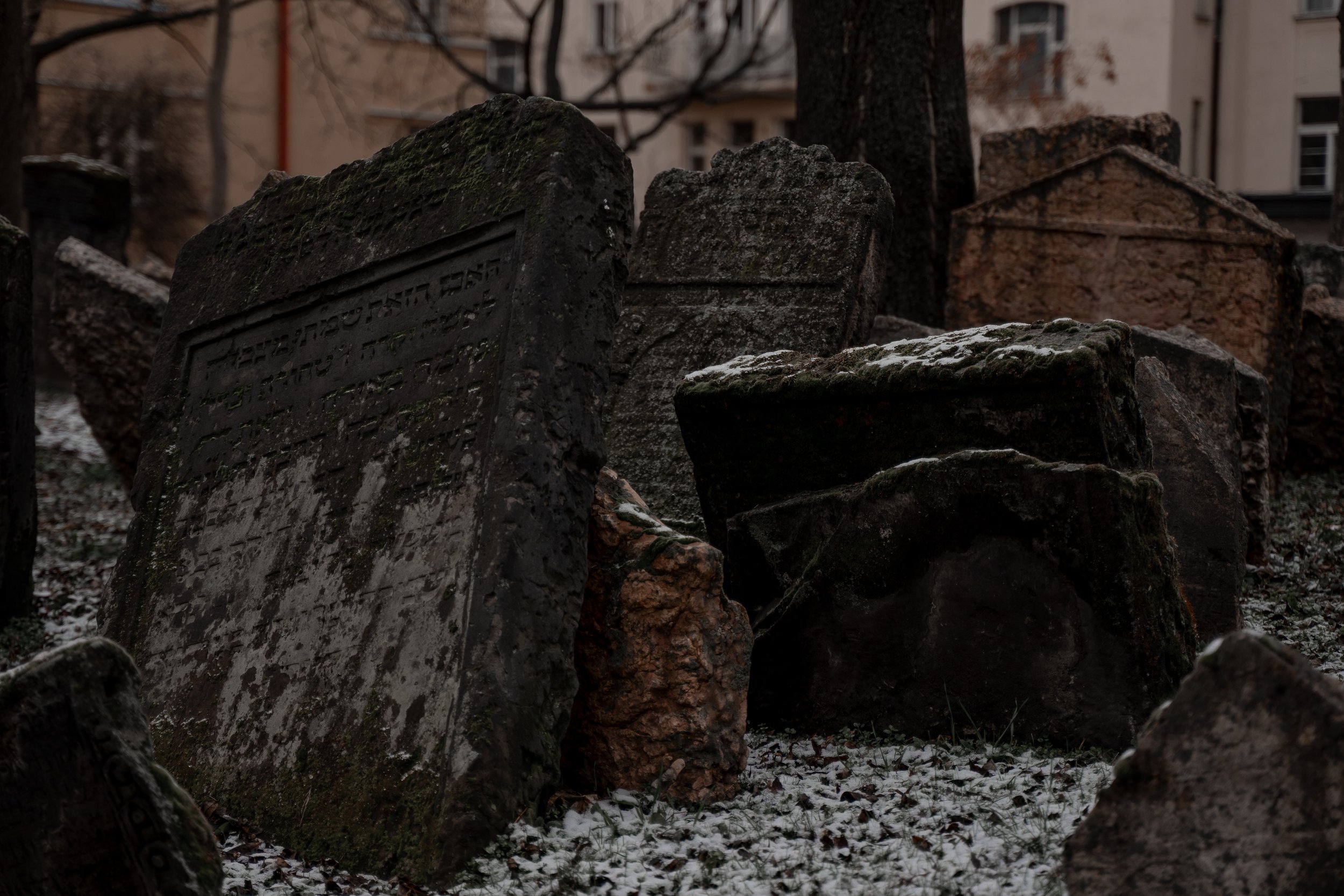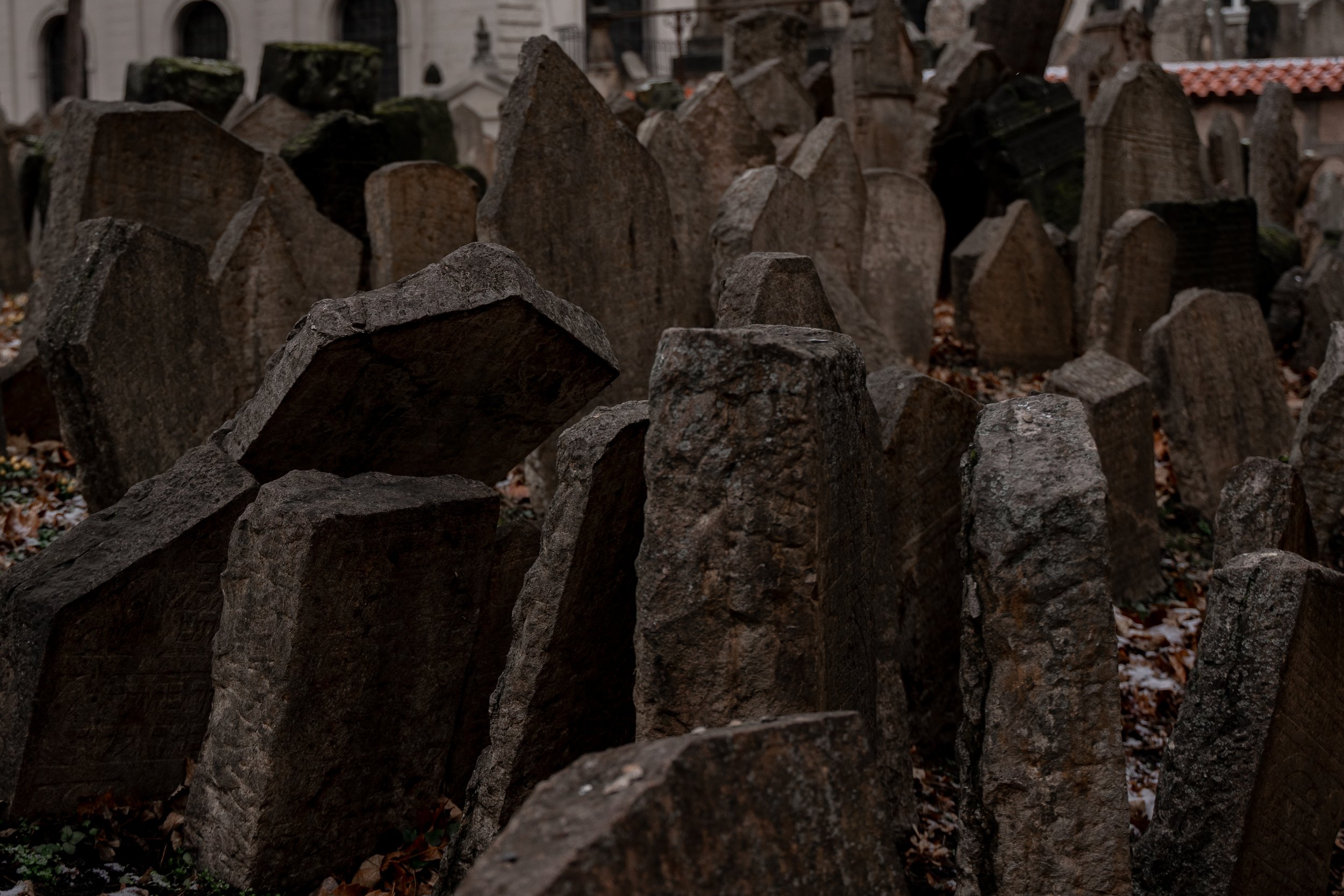Old Jewish Cemetery






The Old Jewish cemetery is part of the Jewish Museum complex, which includes a compelling selection of historical monuments. You can purchase a ticket for the museum either online or at one of the ticket offices on the day of your visit (this will then grant you access to all of the locations in the Jewish town). I would highly recommend visiting the Old-New Synagogue and Spanish Synagogue which are both particularly impressive in their interior design.
The cemetery was inaugurated in the first half of the 15th century, with some of the earliest tombstones dating back to 1439. It is one of the oldest surviving Jewish burial grounds in the world and is the final resting place for around 100,000 people. The raised grounds are particularly unique; covered by a sea of crooked headstones which are packed so closely together that, because of their exaggerated angles, seem to merge into each other.
Due to Jewish customs prohibiting the removal of old graves and the fact that the Jewish community weren’t allowed to purchase additional grounds to expand the cemetery, for centuries the deceased had to be buried on top of each other. This led to some plots holding up to 12 bodies and required more earth for the burials, all of which explains the fact that the cemetery is several meters higher than the surrounding streets.
Walking around the winding paths of the cemetery you can see that many of the 12,000 crumbling tombstones are decorated with motifs, symbols and animals connotating the family name, profession or character of the deceased. For example, the Star of David features for particularly devout Jews, scissors signify the profession of a tailor, books on a shelf connotes a rabbi, and grapes meaning the person’s life was full and prosperous.
Many leading figures in the Jewish community are buried here including the great religious scholar and teacher Rabbi Judah Loew ben Bezalel who is accredited with generating the myth and legend of the artificial creature, the Golem. You can easily spot this grave towards the back of the cemetery as it is marked by a sand-coloured lion.
The last person to be buried here was Moses Beck in 1787, as for sanitary reasons burials were banned shortly after this date by Emperor Joseph who introduced a decree prohibiting interments inside the city walls. During WW2, many synagogues and other Jewish sites in Prague were destroyed by the advancing Germans, but luckily the Old Jewish Cemetery survived and it remains to this day exactly how it looked hundreds of years ago.
Address: Široká 3, 110 00 Josefov, Czechia
